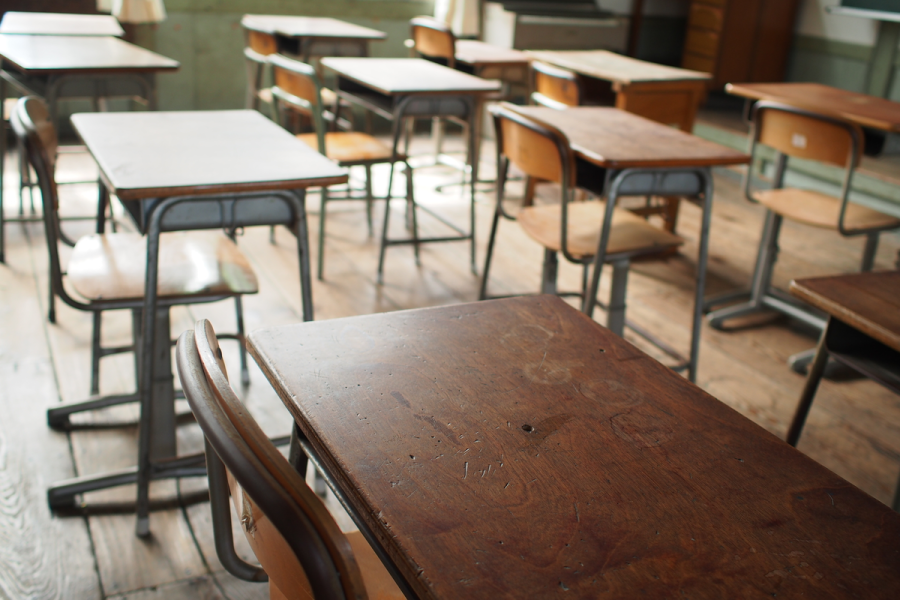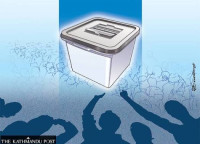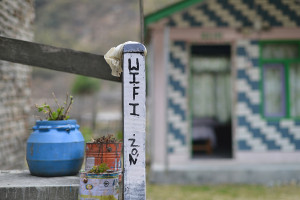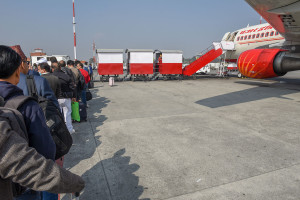Columns
School reopening can’t wait
The biggest costs of Covid-19 will become visible much later, particularly those stemming from lengthy school closures.
Karin Hulshof & Takeshi Kasai
With the Covid-19 pandemic now well into its second year, safely reopening schools has become an urgent priority. School attendance is critical for children’s education and lifetime prospects. The long-term costs of closures—both for individual children and society—are simply too large to justify on a continuing basis.
Evidence since the start of the pandemic shows that Covid-19 does not pose a high risk to children, and that schools are not drivers of transmission within the surrounding community. We have also amassed a large body of knowledge about how to reduce the risks to children, teachers, and their families. Using this knowledge, we all need to urgently work toward reopening schools safely to protect our children’s future.
Prolonged school closures have a significant impact not just on children’s skills attainment and earning prospects, but also on their physical and mental health. While online education can guarantee some continuity of learning for some children, these services are no substitute for in-person attendance. Moreover, access to online learning remains woefully uneven, with disadvantaged children—including those with disabilities, those affected by migration, and excluded minorities—bearing the brunt of the shortcomings of digital education.
The evidence shows increases in anxiety, depression, and self-harm among school-aged children since the start of the pandemic. Children who are not in the classroom also experience increased loneliness, difficulty concentrating, and high levels of learning anxiety. These problems will only grow worse the longer schools remain closed.
School closures have also led to reduced physical activity, poor eating habits, and disrupted sleep patterns. For some children, more time at home has increased the risk of domestic violence, just as more screen time has exacerbated the risks of online harm. And with schools closed, a critical avenue for identifying and reporting abuse and mental health issues has been closed off.
In nearly half the countries in developing Asia, schools have been closed for more than 200 days during the pandemic. The region should prepare for a reduction in the expected gains in reading and math skills for children in both preschool and primary school, as well as a wider achievement gap between disadvantaged children and their peers.
The Asian Development Bank warns that the learning losses caused by prolonged school closures will significantly reduce the future productivity and lifetime earnings of affected students in the region. It estimates the present value of these losses to be $1.25 trillion—5.4 percent of the region’s 2020 GDP. Achieving the 2030 Sustainable Development Goal for education was already going to be challenging enough before the pandemic. Now, UNICEF and UNESCO estimate that education budgets in the region will need to increase by at least 7 percent to stay within striking distance of those targets.
Despite the obvious costs of school closures, many countries are still reluctant to reopen, citing fears of further transmission. But our focus now should be on using what we know about Covid-19 and children to work towards the safe reopening of schools.
Globally, children account for a very small proportion of confirmed Covid-19 cases. Children of primary-school-age and younger are among the least likely cohorts to be infected. And even when they do contract Covid-19, they tend to have milder symptoms than adults (which is why they have not contributed significantly to the proportion of hospitalised cases or reported deaths). And a study of children from the Republic of Korea shows that infected children are less likely to spread the virus.
In short, primary schools, preschools, and early childhood development (ECD) centres are not high-risk settings for transmission, especially if the right safety measures are followed. Transmission levels in these settings have been found to reflect those of the surrounding community.
The one possible exception is secondary schools (high schools), which have accounted for a higher number of outbreaks than primary schools. Because adolescents appear to transmit the virus much like adults, partial closures for secondary schools should remain an option, but only as a last resort and for limited periods where community transmission is surging. When schools are forced to close temporarily, this must be done in conjunction with other community-level public-health and social measures.
But overall, the evidence overwhelmingly points to the need for schools, especially preschools and primary schools, to be reopened. The same applies to ECD centres. There is no such thing as zero risk. But the risks are manageable with robust mitigation strategies. The World Health Organization’s guidance on operating schools during the pandemic includes several measures to reduce Covid-19 exposure and transmission. These include personal hygiene practices, proper mask use, physical distancing, adequate ventilation, and regular cleaning and disinfection of surfaces. Clear and consistent communication with parents and children to ensure compliance both in the classroom and during after-school activities is equally important.
Policymakers must also consider the local context for resuming in-school learning, including factors such as the level of community transmission and the capacity to respond to an increase in infections. In some places, health and education services will need additional resources to implement the necessary safety measures.
Maintaining vigilance and adherence to all of these measures is critical—not only for schools, but also for our broader efforts to contain Covid-19, including the development and spread of virus variants and mutations.
The good news is that school reopenings are not dependent on the availability of vaccines. We need to work toward a sustainable “new normal” right now. While the relatively low risks of children being in school are easily managed, the consequences of keeping them out of their classrooms are grave and far-reaching. It is time for the school gates to reopen.




 20.12°C Kathmandu
20.12°C Kathmandu
















